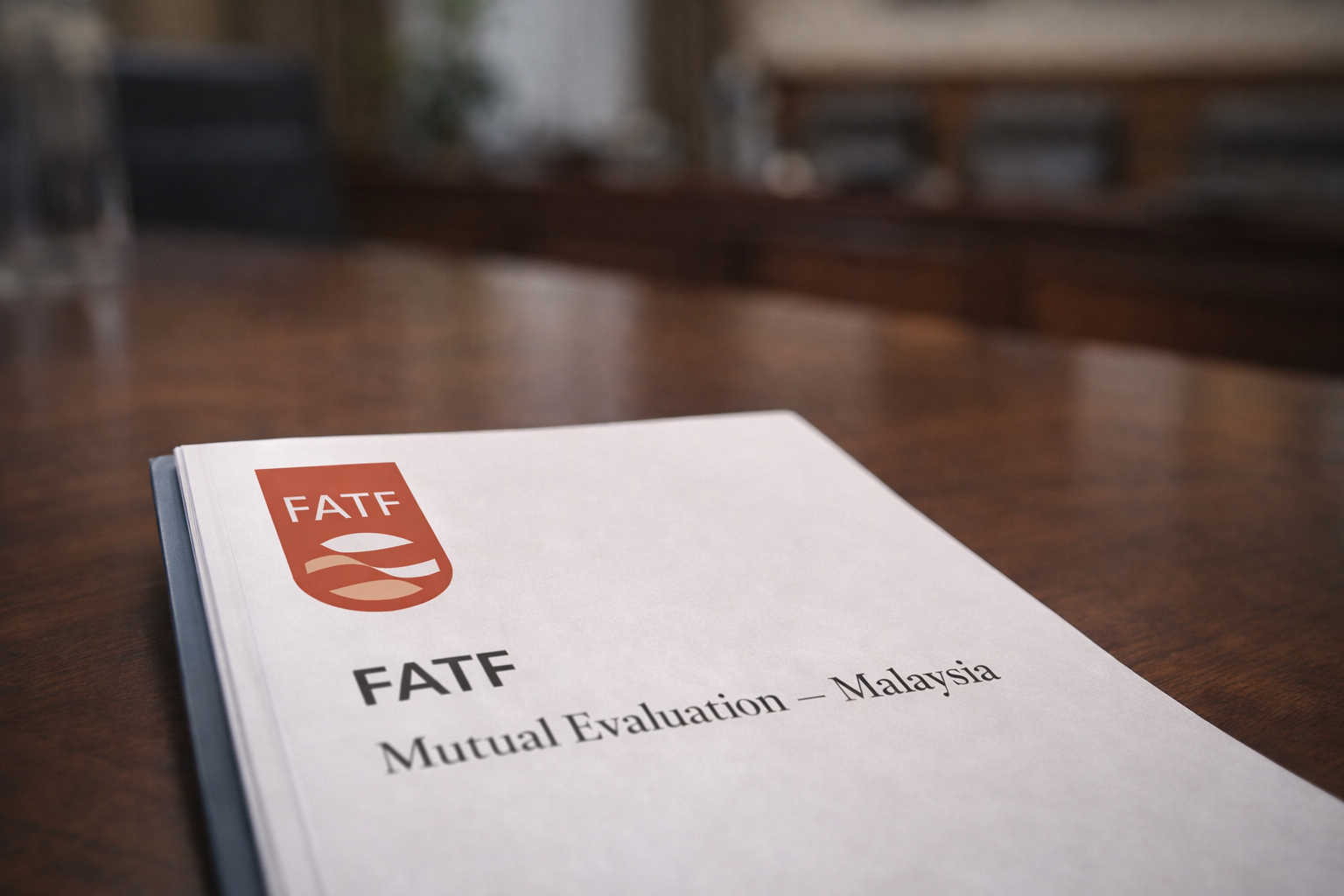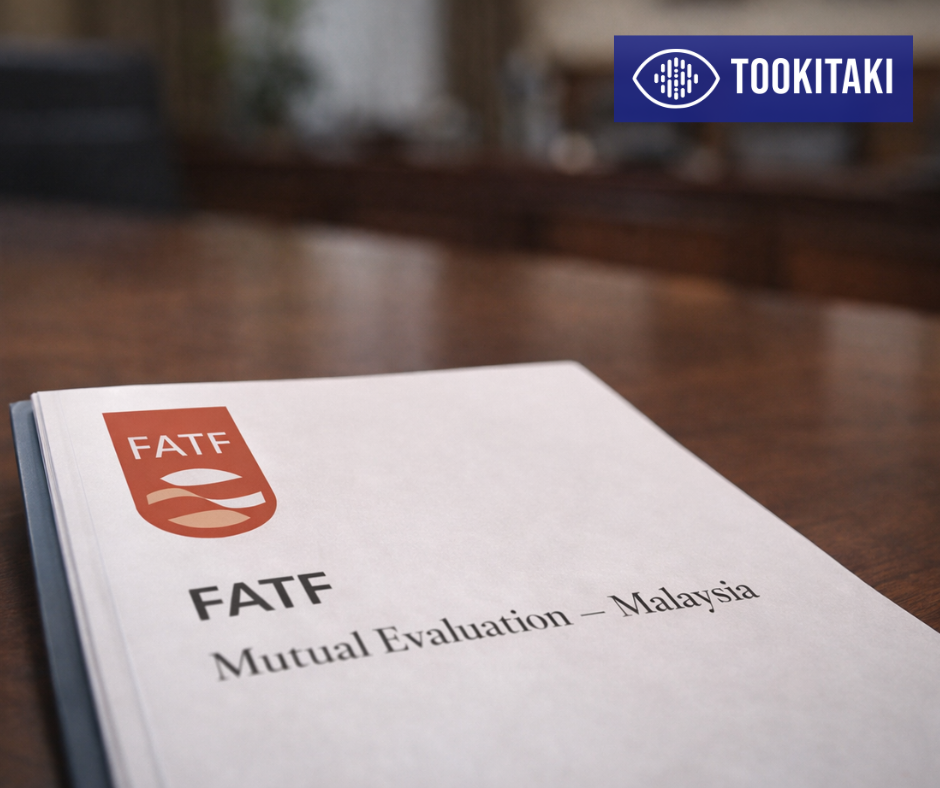Singapore's 2024 AML Strategy: Key Insights for Financial Institutions
.svg)
Singapore has just updated its National Anti-Money Laundering (AML) Strategy for 2024. This strategy is important for financial institutions (FIs) because it provides a clear path to fight financial crime. Money laundering is when people hide illegal money by making it look like it came from a legal source. This can harm the financial system and society, so Singapore is serious about stopping it.
In this blog, we’ll look at five key ideas from Singapore’s 2024 AML Strategy. Financial institutions can use these ideas to protect themselves and stay in line with regulations. By following these steps, they can help keep the financial system safe.
1. Whole-of-Society Approach to AML Compliance
Singapore’s AML strategy emphasises a "whole-of-society" approach to fighting financial crime. This means that the government, businesses, and the public all need to work together. When everyone cooperates, it’s easier to spot and stop money laundering.
For financial institutions, this means building strong partnerships with other organisations, including government agencies. These partnerships allow institutions to share information about new threats and suspicious activities. For example, banks can join groups like the Anti-Money Laundering/Countering the Financing of Terrorism Industry Partnership (ACIP). Through these groups, they can share tips and learn about the latest tactics criminals use.
What Financial Institutions Can Do: Financial institutions should look for ways to connect with other banks, government agencies, and industry groups. Working together makes it easier to find criminals trying to use the financial system for illegal activities.
"Established partnerships, close engagement, and collaboration with private sector entities are key to addressing complex financial crime typologies.”
"Singapore continues to deepen channels for data sharing amongst and with private sector entities.”
2. Enhanced Regulatory Expectations and Compliance
Singapore’s AML strategy brings in new rules that raise the standard for financial institutions. These updates are designed to keep up with modern money-laundering tactics. For example, there are now stronger requirements for knowing who truly owns companies (known as “beneficial ownership”) and stricter controls on digital assets, such as cryptocurrencies.
For financial institutions, this means it’s essential to stay informed and ready to adapt to these new rules. If they don’t, they risk fines or other penalties, which could damage their reputation and their business. Following these regulations also helps keep the financial system fair and secure for everyone.
What Financial Institutions Can Do: To keep up with these regulatory changes, financial institutions can invest in modern compliance solutions. These solutions, like Tookitaki’s FinCense platform, make it easier to follow the rules, even as they change. With the right technology, institutions can ensure they’re always meeting the latest requirements and protecting themselves from potential fines or penalties.
"Singapore has a strong and transparent AML legal & regulatory framework, which is consistent with international standards and best practices.”
"Amendments to the legal framework, including the Corporate Service Providers Bill, expand the scope of regulated entities and increase penalties for AML/CFT breaches.”
3. Leveraging International Cooperation
Singapore’s strategy also focuses on working with other countries to stop money laundering. Criminals often move money across borders to hide it, making it hard for any one country to catch them. By cooperating internationally, countries can share information and catch these criminals more effectively.
"International cooperation is a critical aspect of Singapore’s response to combat ML as well as the effectiveness of our AML framework.”
"Singapore authorities actively cooperate with their international counterparts to achieve law enforcement and supervisory objectives for AML matters.”
For financial institutions, this means it’s important to stay connected with global trends in financial crime. Learning from other countries helps them prepare for new threats and close any gaps that criminals might try to exploit. By working together, banks and financial institutions can keep their defences strong.
What Financial Institutions Can Do: Financial institutions can benefit from tools that allow them to learn from financial crime patterns across borders. Tookitaki’s Anti-Financial Crime (AFC) Ecosystem, for example, uses a system called federated learning. This system lets institutions learn from anonymised data shared by others around the world without compromising privacy. With this kind of tool, banks can stay updated on international trends and strengthen their AML efforts.
4. Adopting Risk-Based and Proportionate Measures
Singapore’s AML strategy promotes a “risk-based” approach, meaning that financial institutions should focus more on high-risk customers and activities rather than treating all risks equally. This approach helps institutions use their resources more efficiently, targeting areas where the risk of money laundering is highest.
"The risk-based approach is a cornerstone of Singapore’s AML framework to manage ML risks arising from sector activities.”
"Adopting a robust risk-based approach allows supervisors to allocate more resources to higher-risk areas.”
For financial institutions, this means adjusting their AML measures based on the risk each customer or transaction poses. Instead of applying the same checks to everyone, they can focus more on people or businesses with a higher likelihood of engaging in financial crime. This makes compliance efforts more effective and reduces unnecessary checks for lower-risk customers.
What Financial Institutions Can Do: Financial institutions can implement dynamic risk-scoring tools to adjust AML checks based on each customer’s risk profile. These tools make it easier to identify high-risk individuals or companies and apply stronger checks where needed. By focusing on risk-based measures, institutions save time and resources while enhancing their overall security against financial crime.
5. Focus on Technological Solutions for Real-Time Detection
Singapore’s AML strategy recognises the importance of using advanced technology to detect financial crime in real time. Criminals are constantly finding new ways to move money and cover their tracks, so relying on traditional methods isn’t enough. With real-time detection, financial institutions can spot suspicious activities as they happen, allowing for faster and more effective responses.
“The adoption of analytics techniques has enabled financial institutions to file STRs more effectively and efficiently.”
“MAS encourages financial institutions to develop data analytics capabilities, integrating technological solutions for proactive detection.”
For financial institutions, this means adopting tools powered by artificial intelligence (AI) and machine learning, which can quickly identify unusual patterns in transactions. These tools reduce the number of false alerts and help compliance teams focus on genuine threats. Real-time detection is particularly valuable for managing large amounts of data, making it easier for institutions to stay one step ahead of financial criminals.
What Financial Institutions Can Do: Financial institutions should consider integrating AI-driven platforms like Tookitaki’s FinCense, which offer real-time transaction monitoring and improved alert accuracy. By using technology that adapts to emerging financial crime patterns, institutions can proactively protect themselves and their customers, ensuring they stay compliant with regulatory expectations.
Final Words
Singapore’s National AML Strategy 2024 lays out a clear path for financial institutions to strengthen their approach to fighting money laundering and financial crime. With a focus on collaboration, regulatory alignment, risk-based measures, international cooperation, and advanced technology, these steps create a powerful framework for building a safer financial system.
Tookitaki’s FinCense solution aligns perfectly with the new strategy, offering financial institutions a comprehensive, AI-driven platform that brings each element of Singapore’s strategy into practice. From real-time detection and dynamic risk scoring to seamless integration with collective intelligence networks, FinCense empowers institutions to stay compliant, secure, and one step ahead of financial criminals.
Ready to enhance your AML strategy? Discover how Tookitaki’s FinCense can transform your financial crime prevention efforts. Book a demo today to see FinCense in action!
Experience the most intelligent AML and fraud prevention platform
Experience the most intelligent AML and fraud prevention platform
Experience the most intelligent AML and fraud prevention platform
Top AML Scenarios in ASEAN

The Role of AML Software in Compliance









